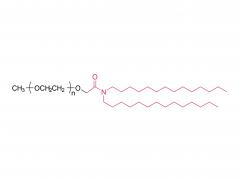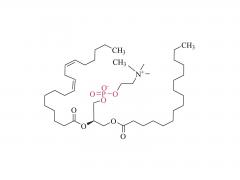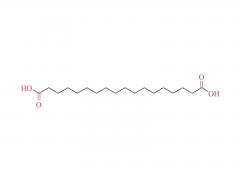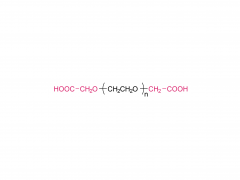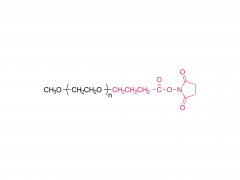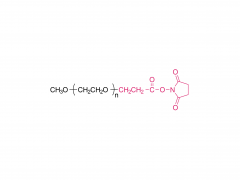In the field of targeted delivery, ADC (antibody-drug conjugate) technology has become one of the key technologies driving the development of related fields due to its dual advantages of "precise recognition + potent action." Within the structure of ADCs, the linker is responsible for connecting the antibody and the drug molecule. Among these, high-stability ADC linkers, with their excellent performance, address the core challenges of traditional linkers in application and have become a crucial support for ensuring the precise efficacy of ADCs.
High-Stability ADC Linkers
Core Value
The mechanism of action of ADCs relies on the targeting ability of the antibody to deliver the drug molecule precisely to the lesion site, by the controlled release of the drug via the linker. In this process, the stability of the linker directly determines the safety and efficacy of drug delivery. If the linker lacks stability and breaks prematurely before reaching the lesion, the drug molecule may be released in normal tissues, causing side effects. Conversely, if the linker is overly stable and fails to release on demand, it may compromise the drug's efficacy. The core value of high-stability ADC linkers lies in achieving a balance between "stability in circulation and controlled release at the lesion site." This ensures that the drug does not leak prematurely while enabling precise release at the target location, fundamentally solving the "stability challenge" in ADC delivery.
Key Characteristics
High-stability ADC linkers are not defined by a single property but rather by a combination of key characteristics that collectively ensure the efficient operation of ADCs. First, circulatory stability: the ability to maintain structural integrity in complex in vivo environments, resisting factors such as enzymatic degradation and oxidation, ensuring the drug molecule does not detach prematurely during blood circulation. Second, targeted responsiveness: the capability to sensitively recognize specific conditions at the lesion site (e.g., acidic pH, specific enzyme concentrations), initiating release mechanisms only upon reaching the target area, thereby achieving "precise triggering." Third, structural compatibility: the ability to adapt well to different types of antibodies and drug molecules, ensuring stability without compromising the antibody's targeting ability or the drug's activity, thereby supporting the diverse development of ADCs.
Technological Breakthroughs
To further enhance the stability of ADC linkers, ongoing research and development continue to focus on key directions. On one hand, in terms of structural design, optimizing the molecular backbone and introducing highly stable structural units enhance the linker's tolerance to complex in vivo environments. On the other hand, in terms of response mechanisms, more precise "trigger switches" are being developed. For example, enzyme-sensitive linkers designed for specific enzymes unique to lesion sites, or pH-sensitive linkers leveraging the pH differences between lesions and normal tissues, ensure drug release only under specific conditions. Additionally, in performance validation, more stringent in vitro simulation tests and in vivo evaluation systems are being established to comprehensively assess the stability and release efficiency of linkers in different physiological environments, providing data support for technological optimization.
Practical Applications
High-stability ADC linkers are already widely used in the research and development of various ADCs, providing assurance for targeted delivery across different fields. In ADCs targeting solid tumors, where the tumor microenvironment is complex and drugs need to penetrate tumor tissue to reach the lesion, high-stability linkers ensure the drug does not release prematurely during penetration, increasing drug concentration at the tumor site. In ADCs for hematological diseases, high-stability linkers reduce drug leakage in the bloodstream, minimizing damage to normal blood cells and improving treatment safety. Furthermore, in the development of long-acting ADCs, high-stability linkers extend the circulation time of ADCs in the body, reducing dosing frequency and improving patient convenience. For example, an ADC drug for advanced breast cancer, using a high-stability linker, not only reduced the incidence of drug-related side effects but also significantly extended patients' progression-free survival, providing a new effective option for clinical treatment.
Future Outlook
As ADC technology continues to evolve, the requirements for linker stability will further increase. The development of high-stability ADC linkers will advance toward higher precision and broader adaptability. In the future, the integration of artificial intelligence technology will enable precise prediction and design of linker structures, further optimizing the balance between stability and responsiveness. At the same time, universal high-stability linkers suitable for more drug types and antibody types will be developed, lowering the technical barriers to ADC research and development. Additionally, greener and more efficient production processes will be explored to enhance linker performance while reducing research, development, and production costs. High-stability ADC linkers will continue to serve as a core support for the development of ADC technology, driving the field of targeted delivery to new heights.
Product:
Various Kingds And Grades Of Such Monodispersed Are Readily Avaliable| SINOPEG







